19.5.2014
This morning at 7.20am a group of peace campaigners began blockading the Atomic Weapons Establishment (AWE) site at Burghfield, near Reading. The protesters, acting as part of ActionAWE [1] campaign of non-violent direct action, are trying to disrupt construction of a new nuclear warhead factory on the site.
The new development at AWE Burghfield is being built at a cost to the tax payer of almost £2 billion, despite the fact that parliament has yet to vote on replacing the current generation of nuclear warheads that the site would build.
The protesters were locked together using handcuffs inside 'lock-on' devices – made from drainpipes, and vegetable oil drums filled with concrete in order to block the gate to the construction site to prevent further work on the site.
Amy Clark, 19, a Peace Studies Student at Bradford University said “Public money is already being spent in its millions toward the renewal of trident. The final decision on renewal must be made by 2016 so it's time to act now to stop it.”
Phil Wood, 20, a Politics Student also at Bradford University added “To be spending millions of pounds and planning to spend billions more on nuclear weapons while cutting back on essential public services that people rely on is unforgivable”
Catherine Bann, 40, mother of two from Todmorden, said: "The money we would spend renewing Trident could pay for all A & E hospital departments in the country for the next 40 years! It's a huge waste of public money to be investing in nuclear weapons, and people like us must make a stand now, so that future generations do not have to bear the cost.”
Matt Fawcett, 39, from Yorkshire CND said: "This 'do as we say, not as we do' policy of telling other countries they can't develop nuclear weapons while we spend billions developing new weapons of our own, not only undermines attempts to limit the spread of nuclear weapons but also discredits Britain on the world stage. Polls show 87% of the British public are against spending on new nukes at a time of such drastic cuts, yet the construction goes on at Burghfield without any parliamentary debate"
For further details contact:
Sarah 07737 596 808
Nina 07812 104 279
Notes to editors
The UK has an armed nuclear submarine on patrol and ready to fire at all times, with the ability to wipe out cities almost anywhere on earth within 15 minutes[2]. The UK has a stockpile of around 225 nuclear warheads[3], each with eight times the explosive power of the bomb dropped on Hiroshima in 1945 [4] that killed an estimated 140,000 to 200,000 people. Running the Trident nuclear weapons system currently costs £2 billion a year[5], and has not seen any of the cutbacks facing other government spending and public services. The government will vote in 2016 to decide whether to invest in the UK’s Trident nuclear weapon system for another 30 years.
Operated by a consortium of Jacobs Engineering Group, Lockheed Martin and Serco, AWE Burghfield plays an integral part in the final assembly and maintenance of nuclear warheads for use in the Trident system[6]. In 2011 Peter Luff, the then Minister for Defence Equipment, announced £2 billion of spending for redevelopment of the Burghfield and Aldermaston weapons factories[7]. The total spending on Weapons of Mass Destruction in the UK will soar to over £100 Billion should the government take the decision to renew Trident in 2016 [8].
Action AWE (Atomic Weapons Eradication) is a grassroots campaign of nonviolent action dedicated to halting nuclear weapons production at the Atomic Weapons Establishment factories at Aldermaston and Burghfield.
[2] http://www.greenpeace.org.uk/peace/trident-the-uks-nuclear-weapons-system
[3]Stockholm International Peace Research Institute:
www.sipri.org/research/armaments/nuclear-forces
[4] http://www.cnduk.org/information/briefings UK warheads are thought to have a yield of 80-100kt.
[5] http://fullfact.org/factchecks/cost_trident_nuclear_deterrent-28864
[6] www.awe.co.uk/aboutus/the_company_eb1b2.html
[8] http://www.cnduk.org/information/briefings/trident-briefings
Tags:Aldermaston, Bradford, Disarmament Activism, Nuclear, Nuclear weapon, Warfare and Conflict, Weapons, Yorkshire Campaign for Nuclear Disarmament

 24th May Following on from the arrests of two local residents last week, a further arrest has been made of an activist playing music in Beverley (near Hull.) A flotilla of Police, from the Humberside division, armed with tazers and dogs, swooped into Beverley, town centre, as the
24th May Following on from the arrests of two local residents last week, a further arrest has been made of an activist playing music in Beverley (near Hull.) A flotilla of Police, from the Humberside division, armed with tazers and dogs, swooped into Beverley, town centre, as the  24th May Following on from the arrests of two local residents last week, a further arrest has been made of an activist playing music in Beverley (near Hull.) A flotilla of Police, from the Humberside division, armed with tazers and dogs, swooped into Beverley, town centre, as the busker and anti fracking activist known as Daznez was playing and singing music in Beverley town centre. Local people who were watching and listening to the musician remarked at the heavy handedness of the arrest as at least six police personnel and their dogs took the musician into custody. The musician has been taken to Clough Road, Police Station in Hull but has not yet been charged with an offence.
24th May Following on from the arrests of two local residents last week, a further arrest has been made of an activist playing music in Beverley (near Hull.) A flotilla of Police, from the Humberside division, armed with tazers and dogs, swooped into Beverley, town centre, as the busker and anti fracking activist known as Daznez was playing and singing music in Beverley town centre. Local people who were watching and listening to the musician remarked at the heavy handedness of the arrest as at least six police personnel and their dogs took the musician into custody. The musician has been taken to Clough Road, Police Station in Hull but has not yet been charged with an offence. 20th May 2014. Since the 15th or the 16th of May,
20th May 2014. Since the 15th or the 16th of May,  20th May 2014. Since the 15th or the 16th of May,
20th May 2014. Since the 15th or the 16th of May, 

 20th May 2014. A group of area residents have blockaded the access road to an exposed section of Enbridge’s Line 9 pipeline, beginning at 7am this morning.
20th May 2014. A group of area residents have blockaded the access road to an exposed section of Enbridge’s Line 9 pipeline, beginning at 7am this morning.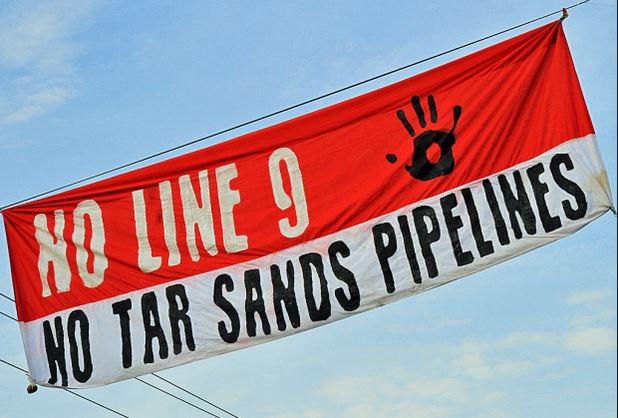 20th May 2014. A group of area residents have blockaded the access road to an exposed section of Enbridge’s Line 9 pipeline, beginning at 7am this morning. They say they will stay for at least twelve hours, one hour for every thousand anomalies Enbridge has reported to exist on the line. These community members turned away Enbridge employees who were scheduled to do work on Line 9 in preparation for it to carry toxic diluted bitumen from the Alberta Tar Sands. This particular work site is adjacent to the Bronte creek, a major waterway flowing to Lake Ontario, the water source for more than ten million people.
20th May 2014. A group of area residents have blockaded the access road to an exposed section of Enbridge’s Line 9 pipeline, beginning at 7am this morning. They say they will stay for at least twelve hours, one hour for every thousand anomalies Enbridge has reported to exist on the line. These community members turned away Enbridge employees who were scheduled to do work on Line 9 in preparation for it to carry toxic diluted bitumen from the Alberta Tar Sands. This particular work site is adjacent to the Bronte creek, a major waterway flowing to Lake Ontario, the water source for more than ten million people. 19th May 2014. Maine Earth First!/350 Maine call for Solidarity Actions Surrounding Superior Court Hearing in Fracked Bakken Crude Oil Train Case
19th May 2014. Maine Earth First!/350 Maine call for Solidarity Actions Surrounding Superior Court Hearing in Fracked Bakken Crude Oil Train Case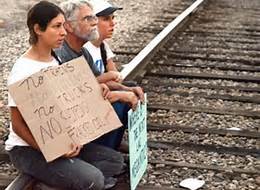 19th May 2014. Maine Earth First!/350 Maine call for Solidarity Actions Surrounding Superior Court Hearing in Fracked Bakken Crude Oil Train Case
19th May 2014. Maine Earth First!/350 Maine call for Solidarity Actions Surrounding Superior Court Hearing in Fracked Bakken Crude Oil Train Case
 17th May 2014. The Asian Human Rights Commission (AHRC) is deeply concerned, and demands an investigation into the actions of the secur
17th May 2014. The Asian Human Rights Commission (AHRC) is deeply concerned, and demands an investigation into the actions of the secur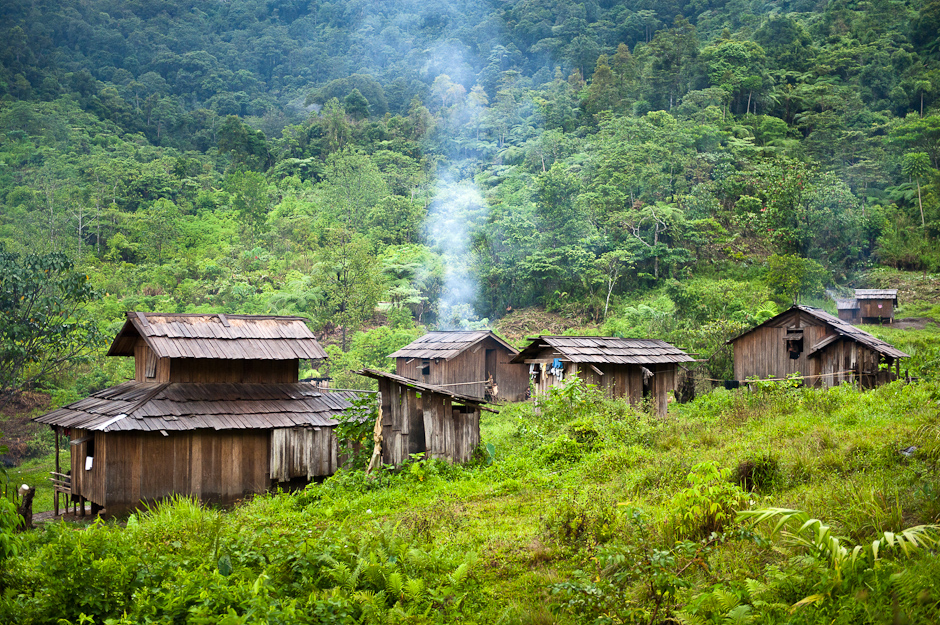 17th May 2014. The Asian Human Rights Commission (AHRC) is deeply concerned, and demands an investigation into the actions of the security guards and their employer landlord for shooting at, and holding at gunpoint, indigenous people who were to occupy their ancestral land in Quezon, Bukidnon.
17th May 2014. The Asian Human Rights Commission (AHRC) is deeply concerned, and demands an investigation into the actions of the security guards and their employer landlord for shooting at, and holding at gunpoint, indigenous people who were to occupy their ancestral land in Quezon, Bukidnon. 15
15
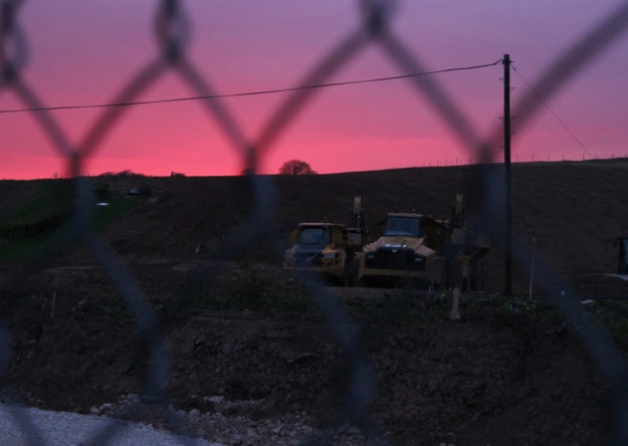 15th May 2014. About a little over week ago we snuck into a condo development in Seattle and poured a gallon of bleach into the gas tank of an excavator. This was a small but easily reproducible attack against the expansion of gentrification in Seattle.
15th May 2014. About a little over week ago we snuck into a condo development in Seattle and poured a gallon of bleach into the gas tank of an excavator. This was a small but easily reproducible attack against the expansion of gentrification in Seattle. 14th May 2014.
14th May 2014. 14th May 2014. Multinational corporations are infamous for pushing native people off their land in order to open
14th May 2014. Multinational corporations are infamous for pushing native people off their land in order to open 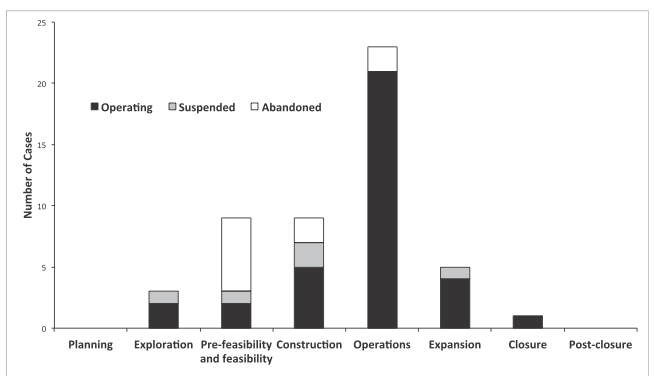
 12th May 2014 At least three people are reported dead with dozens more injured, hospitalized and arrested after hundreds of police began a brutal repre
12th May 2014 At least three people are reported dead with dozens more injured, hospitalized and arrested after hundreds of police began a brutal repre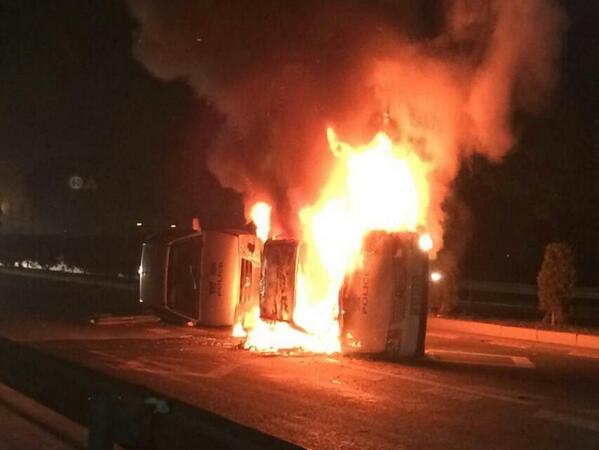 12th May 2014 At least three people are reported dead with dozens more injured, hospitalized and arrested after hundreds of police began a brutal repression with baton beatings, tasers and tear gas, in a move to clear out 1000′s of proposed waste incinerator plant protesters in Hangzhou.
12th May 2014 At least three people are reported dead with dozens more injured, hospitalized and arrested after hundreds of police began a brutal repression with baton beatings, tasers and tear gas, in a move to clear out 1000′s of proposed waste incinerator plant protesters in Hangzhou.